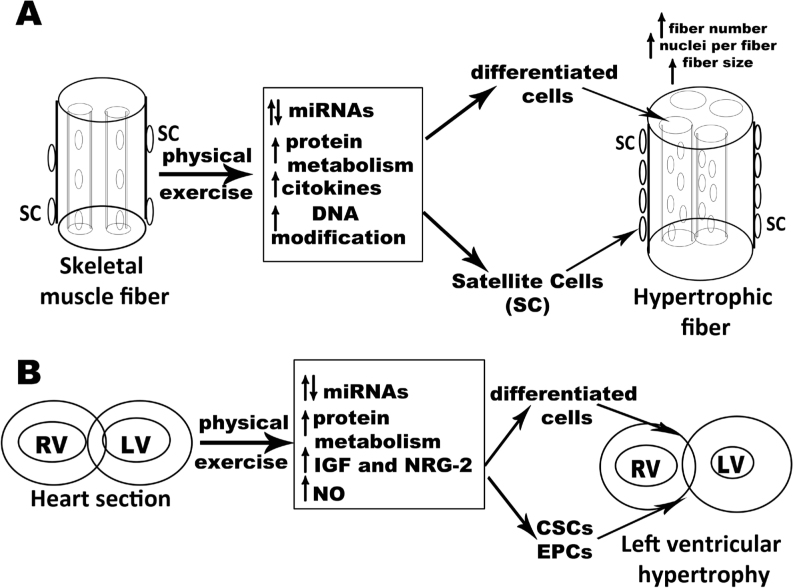Figure 1.
Schematic representation of the effects of physical activity on skeletal muscle and heart.
Panel A: muscle is shown like a cylinder with inside poly-nucleated fibers. Physical activity determines a morphological hypertrophy of muscle due to the increase in fiber numbers, in nuclei number per fiber and fiber size. Together with muscle hypertrophy, exercise induces proliferation of endothelial cells and release of proangiogenic and anti-angiogenic factors whose balance contributes to muscle adaptation to physical exercise. SC, Satellite Cells;
Panel B: A schematic heart section is shown. Physical exercise determines cardiac hypertrophy (due to the increase of cardiomyocyte length, activation of cardiac stem cells and microvascular remodeling).
RV, Right Ventricle; LV, Left Ventricle; IGF, Insulin Like Growth Factor 1; NRG-2, Neuregulin-2; NO, Nitric Oxide; CSCs, Cardiac Stem Cells; EPCs, Endothelial Progenitor Cells. In both panels, possible molecular mediators are reported.

